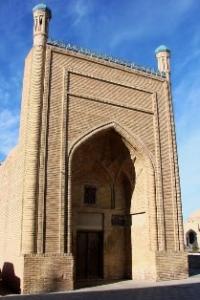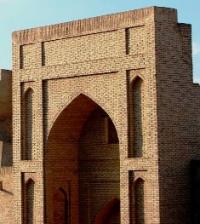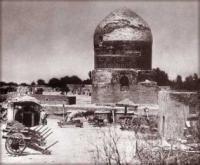You are here
Mausoleum Nur Ad-Din-Basir.



Recommended excursion tours over Samarkand.
“If an ancient man saw planes two thousand years ago
He would've thought they were birds
Or angels from another world
Or messengers from other planets”
Dejan Stojanovic.
Great Silk Road in Samarkans & Kazakhstan.
At the end of the XIX of Sufi sheikh Nur ad-Din Basir. He came from environs of Tashkent and was murid of "suhrawardiyyah" sheikh Zain ad-Din Qui-Arifani. The sheikh was blind from the birth and the legend says that he recovered sight, owing to his sanctity.
When he was a child, he moved to Samarkand together with the mother and for many years had preached Sufi doctrine, having survived Mongol invasion. Nur ad-Din Basir had the highest Sufi degree - Qutbi-Chahar-duhum, i.e. “Fourteenth qutb”.
The “suhrawardiyyah” doctrine developed ideas of Abu Hamid al-Gazali, Abu-n Nadjib Suhrawardi and Ibn Arabi. Spiritual teachers of Amir Temur - sheikhs Shams ad-Din Kulal and Abu Sa’id Sagaradji belonged to this Sufi tariqah.
The founder of tariqah, Shihab ad-Din Suhrawardi preached collective performance of recitative Sufi meditations (dhikr), but was against falling into a trance. "Suhrawardiyyah" practiced also silent, or personal dhikr.
Characteristic rite was belting at the ceremony of Sufi initiation. During mystical training, a disciple was obliged to tell his dreams to the teacher, which reflected successes and failures of spiritual evolution.
Sheikh Nur ad-Din Basir died in the mid-XIIIth century and was buried in Samarkand, near Navodon spring. In the mid-XIV centuries, sheikh worship was so great, that pious people and religious figures were walking by his mausoleum barefoot.
At Amir Temur, his remains were reburied in the citadel. There, above the tomb of Nur ad-Din Basir was built the dome mausoleum. After Russian conquest, due to construction of barracks, the mausoleum was demolished, and remains of sheikh were again reburied, then at the cemetery behind Hazret-Hyzr mosque.
Authority:
Alexey Arapov. Samarkand. Masterpieces of Central Asia. Tashkent, San’at. 2004.







